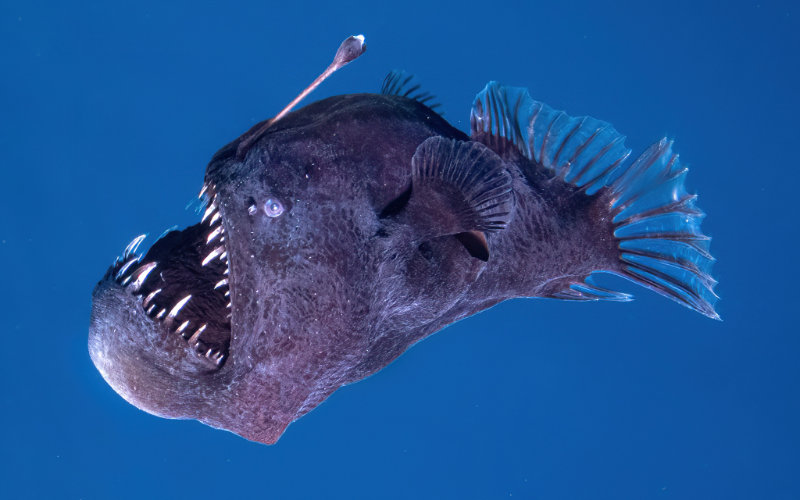Rare Deep-Sea Fish Spotted Near Surface Off Canary Islands

Researchers have observed an unbelievable presence, in broad daylight and on the surface, near the coast of Tenerife, in the Canary Islands, off the coast of Morocco.
On January 26, a team of researchers from the Canary Islands NGO Condrick Tenerife spotted and captured in broad daylight and on the surface a "black devil of the abyss," characterized as a "legendary fish." A first, as this frightening fish normally lives in the ocean depths. This species normally lives in the ocean depths, "in waters ranging from 200 to 2,000 meters deep," the NGO specifies.
The black sea devils (Melanocetus johnsonii) belong to a genus whose translation means "black sea monster," a name quite appropriate given their gaping jaws, sharp fangs and bioluminescent lures attached to their forehead that they use to attract their prey, reports National Geographic.
"It was like a dream come true," says David Jara Bogunyà, marine wildlife photographer for the NGO Condrik Tenerife. "When I was a child, I had a book with creatures from the seabed, and I loved the illustrations. They seemed crazy to me. The animals didn’t look real." For about an hour, Jara and his colleagues on board the ship Glaucus sailed with and photographed the living black sea devil, and shared the video on social media.
"When I first saw the video, I really couldn’t believe my eyes. [...] I thought it was an AI," explains Kory Evans, a fish biologist at Rice University. "It’s a really rare event to see a creature from the deep like this near the surface," explains Bruce Robison, senior scientist at the Monterey Bay Aquarium Research Institute. He is also the one who recorded the only other sequence of a living black sea devil, a specimen spotted at a depth of nearly 580 meters by the remotely operated vehicle Doc Ricketts in Monterey Bay in 2014.
Robison tries to explain why the black sea devil came to the surface of the ocean. According to him, it is possible that the angler fish ate a fish with a swim bladder or gas gland, and that as this gas continued to expand, it attracted the predator upwards in the water column. "It’s the kind of thing that, once started, is hard to control," Robison explains. It is also possible that the fish was trapped in a rising warm water column created by underwater fissures. He also thinks the black sea devil, also called the humpback angler fish, may have been swallowed or trapped by a larger predator, like a pilot whale, seal, sea lion or even a jellyfish. The predator would then have spit it out or the angler fish would have freed itself closer to the surface.
"These animals have been known for a very long time. We’ve been catching them in nets since the 19th century. It’s just that all the specimens available before were dead," adds Robison.
Related Articles
-

Drought Threatens Morocco’s Ancient Argan Forests, Risking Ecological Disaster
8 September 2025
-

Woman Arrested for Fabricating Brutal Kidnapping to Cover Up Affair
7 September 2025
-

Essential Morocco Travel Hacks: Navigating ATMs, Taxis, and Currency Traps
7 September 2025
-

Ambitious Gibraltar Tunnel Project Faces Seismic Challenges and 2040 Horizon
7 September 2025
-

Culinary Controversy Erupts: Moroccan "Tanjia" Dish Claimed as Algerian, Sparking Online Outrage
7 September 2025